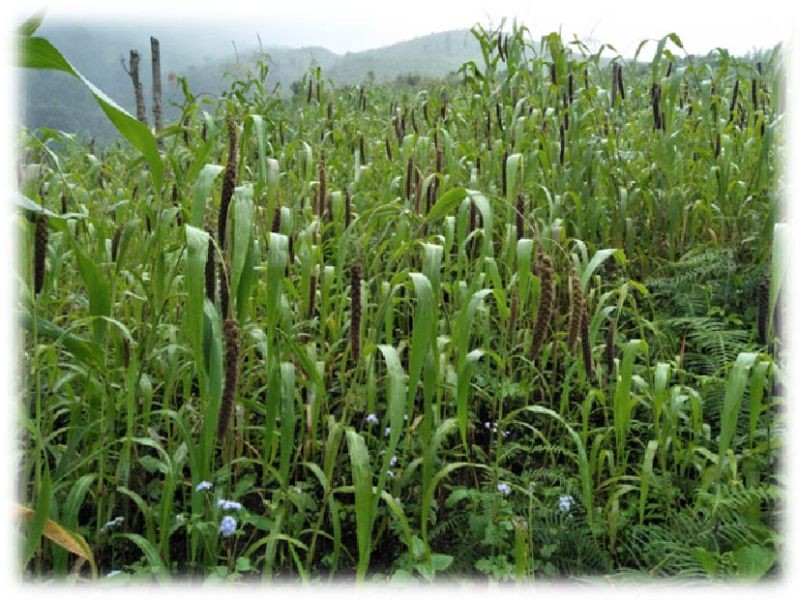
Dr Hannah Krujia Asangla
ACTO – Agronomy, KVK Phek
Millets are a collection of highly variable small seeded grasses, extensively grown around the world as cereal crops or grains for human food and as fodder. Till 50 years ago, millets were the major grain grown in India, from a staple food and integral part of local food cultures. Millets have come to be looked down upon by modern urban consumers as “coarse grains” and exchanged for a more “refined” diet. Unfortunately, the refined diet lacks the nutrients that are vital and important for us. Millets are sustainable drought-resistant crops capable of surviving a wide range of climatic conditions.
Winds of change for millets – Great efforts are being put to increase the demand of millets in India and the world, including changing the mindset of the people. Many organizations such as North East Network based at Chizami Phek Nagaland, PRAGATI in Koraput district Odisha and PRADAN affiliates in Chattisgarh and Jharkhand are coming up in support of this cause. Efforts are being taken to educate farmers about better millets growing techniques through awareness campaign, capacity building programmes and hands on demonstration on improved growing techniques.
Importance of different types of millets – There are two broad categories of millets, namely major and minor millets. Pearl millet, sorghum, finger millet and foxtail millets come in the category of major millets, others such as barnyard millet, kodo millet, proso millet etc., are considered minor millets. Each millet is significant of its own, such as finger millet are full of calcium, jowar have potassium and phosphorus, and foxtail is fibrous while Kodo is rich in iron. Therefore, it is advisable to keep rotating the kind of millets we are eating.
Important points of millets:
• Millets can resist harsh conditions and are sustainable to the environment.
• Millets do not get destroyed easily, and some of the millets are good for consumption even after 10-12 years of growing, thus providing food security.
• Millet is fibrous in content, has magnesium, Niacin content, it is gluten free and has high protein content.
• Millet plays a functional role in combating several ailments.
• The latest blog reported that in COVID-19 situations, millet appears to be in demand due to its constituent’s immune booster such as essential vitamins and trace components such as zinc (Zn), copper (Cu), and selenium found in millets.
Agro-Economic and Nutritional Importance
Being a C4 photosynthetic crop, foxtail millet is naturally equipped with excellent water use efficiency (WUE) and nitrogen use efficiency. Foxtail millet requires only 26% of their grain weight in water to germinate, whereas other major cereals such as rice, wheat, and maize require a minimum of 45% of their grain weight. The health-benefiting properties of millets have gained significant importance in nutritional and medicinal research. Foxtail millet is widely used not only as an energy source for pregnant and lactating women, but also for sick people and children, and especially for people with diabetes. The germinated seed of yellow seeded cultivars is slightly acidic or bitter, acts as a good digestive, soothes the skin, and promotes appetite. It is used in the treatment of dyspepsia, poor digestion, and fullness in the stomach, belching etc. Thus, foxtail millet is a versatile crop.
Therefore, millets which are identified with our tradition and grown indigenously by the poor farmers must be recognized as an important food for not only as a nutritious food but also as enhancing immunity of human body for tackling diseases and virus. There are many sources of foods that are known as immunity boosters but being a staple cereal, millets may prove to be a promising source as far as our country is concerned. The most important elements that maintain our body immune system is a healthy balance diet, which contains all vitamins and minerals in balanced proportions.
Sources:
• https://www.icrisat.org
• https://doi.org/10.1111/ijfs.15044
• www.agrisources.com/herbs/setariaitalica




